Wondering what to do with the antique heirlooms passed on to you by your great-grandmother? It can be difficult to determine whether those pieces possess an actual value, especially if you are not a keen antique collector.
Knowing how to tell if something is brass is also necessary if you frequently fall in love with antique pieces at thrift stores. Since it can prevent you from getting duped, you will be able to get yourself beautiful antique decoration pieces at a justified price.
So, we have compiled the perfect guide for you. In this article, you will discover how you can tell if something is brass by identifying brass makers’ marks and assessing their true value.
Let’s get started!
Table of Contents
Brief Description of Antique Brass
Antique brass has been used to make door knobs, hardware, jewelry, lighting fixtures, and fireplace accessories. It is not a single metal but a combination of copper, zinc, tin, and other metals.
Most antique brass artifacts were created in Birmingham, a major metalworking hub, around the middle of the 18th century. Older brass was much smoother back then because it had been thoroughly cleaned.
From the 19th century onwards, we observe an increase in the roughness of antique brass. This is a reliable indicator of the creation date of your piece. You might even be able to spot a maker’s mark on antique brass items if a stamp was used on them.
Brass objects made before the invention of factories and machinery usually had seams running along their edges or sides. Since these objects were crafted by hand, it was impossible to make that seam disappear.
Brass is less likely to shatter or split and is stronger than typical copper. While polished, it can become quite glossy, but in general, it has a lovely matte appearance that doesn’t blind you with light reflections.
The Beauty of Solid Brass
Solid brass, a copper alloy, has been utilized for its beauty, toughness, and durability since the dawn of time. Depending on the amount of copper and zinc added to make the brass, there might be some color differences, just like any other metal form.
The versatility of brass—it may be poured, twisted, hammered, wrought, and even die-cut—is one of its best qualities. For many years, brass has been the metal of choice for high-end furniture and accessory equipment, lighting systems, lamps, fireplace accessories, candle holders, and several other decorative items.
The natural color of solid brass may always be restored through polishing. Even if it had been lacquered, the lacquer could be removed, and the brass cleaned again to restore it to its original color and sheen without causing any damage to the piece.
Brass is generally popular for many reasons, but more because it can be polished in many different ways. The following are some common types of finishing techniques:
- Satin Finish
Also referred to as matte brass, this finishing makes the object look dull and less shiny. It has a rough feel and a subdued brass tint that can almost be golden brown.
- Hand-Rubbed Finish
The smooth finishing or oiled brass are other names for the hand-rubbed finish. Because it is applied by hand and gives the brass a somewhat soft yet darker feel, this finish is frequently referred to as the “soft finish.”
- Bronze Finish
As the name suggests, a bronze finish has a bronze tint. The bronze color is frequently added to brass pieces to create an old look and feel.
- Brushed Finish
As the name suggests, the brushed finish has a brushed appearance. Typically, a special tool is used to brush the brass in one direction only, leaving subtle shading on the object.
- High Polished Finish
Brass has a bright, nearly mirror-like sheen when it has been highly polished. High polished brass is a glossy finish that can be extremely smooth and shiny. Sometimes the polish on the brass can be so intense that you can nearly see your own reflection in it.
- Antique Finish
The brass is blackened to give it an aged or antique-like appearance, creating the antique brass finish. Frequently, this finish can resemble chocolate brown in appearance.
- Verdigris Finish
When brass is given a verdigris finish, it has been intentionally aged to develop a green pigment; verdigris is brass exposed to the elements.
As solid brass is greatly valued and is considered precious, it is not uncommon to get scammed by people in the name of it. Hence, here are a few features of authentic brass that you can use to judge the originality of your antique pieces.
Tips to Identify Antique Brass
Recognizing antique brass can be a challenge for more than one reason. Since brass is susceptible to tarnish, sometimes it has been coated to stop tarnishing. In other cases, it has been painted over to modify its style.
Hence, the appearance of brass objects can significantly differ from each other depending on the method chosen by their previous owners to store and preserve them.
So, in order to know how to identify antique brass, you should be aware of its typical characteristics, which are mentioned as follows:
Weight
Feeling the item’s weight can give you a pretty good idea of its authenticity. It is possible that you are not holding brass if it is quite lightweight to pick up. Solid brass is heavier than many other metals because of its metallic composition.
Color
There is no standard color for antique items made out of brass. That’s because brass is an alloy, as mentioned above, so it is a blend of several metals. Typically, brass is made out of combining zinc and copper, but there’s no specific formula for how much of these other metals should be present in the alloy.
When polished, brass often contains additional zinc for applications where robustness is a concern, like cabinetry or doorknobs, and has a yellow tone.
Brass may have a warmer, even reddish, tone and include less zinc when used in interior decoration or jewelry. Tin is sometimes used in the alloy of brass, for example, in screws or naval hardware, to avoid corrosion.
Vintage Brass Makers Marks
Some ancient brass objects have maker’s marks or stamps to help date and place their manufacture. Look for these identification brass maker marks, which may take the form of a string of numbers, initials, or symbols, on the underside or rear of your brass antiquities.
Oxidized or Tarnished Surface
It is not unusual for antique items made out of brass to be tarnished. As we have already mentioned, brass is a combination of various metals, which means it is susceptible to surface rust, discoloration, or corrosion.
Tarnishing is an inevitable process as, over time, the brass metals react with the gasses in the air and natural oils of the skin. Tarnish typically appears as spots, and they can vary in color. Sometimes it is red, and other times, it can be black, gray, or even brown.
While the process starts as spots, it can soon cover the entire object if it is not cleaned. Here, it is also important to note that tarnished antique brass objects are not necessarily lower in value; hence, there is no need to clean them. Although, that is more of an individual preference.
Coated or Lacquered
Some brass objects have a lacquer coating applied to stop tarnishing. However, this lacquer tends to peel or wear off over time. You might see uneven wear and tarnish on an antique artifact with a coated brass finish.
Older lacquered works frequently exhibit dull spots, minor cracks, or crazing because the lacquering technique has been employed dating back to at least the 19th century.
Painted Surface
It can be challenging to recognize painted brass. Brass was a poor finish in particular ages. Instead of throwing away the items as they went out of fashion, owners would paint them.
These painted objects have a similar appearance to other colored metals. However, if you can flake or scrape a small amount of paint off, you might be able to see the brass underneath. The item can be restored to its initial state by removing the paint.
Reconditioned Brass
Over time, some brass antiques needed to be restored. To fix an uneven surface, the lacquer layer may occasionally be removed. In most cases, this has no impact on the item’s worth.
Other times, the piece has to be soldered to strengthen its framework or fix the damage. If you closely examine a piece that has been restored, you can notice more recent solder marks. In most cases, excellent repair is difficult to spot at first glance.
In a Nutshell…
If you want to identify antique brass objects, here are a few things for you to remember:
Antique solid brass objects are not attracted to magnet sticks.
- The undertones of antique brass are golden.
- Older brass will have inherent flaws from use or high production costs. You should expect to see oxidation, tarnish, discoloration, and scratches.
- Original antique brass objects are typically quite heavy.
- If an item is made of antique brass, you will be able to sense a vintage aesthetic from it.
How to Identify the Differences Between Antique Copper, Bronze & Brass?
How to Clean Rusted Solid Brass Objects?
Has your antique collection gotten rusty over time? Do you want it to look beautiful again? Cleaning brass objects the right way is the best solution to restore or enhance the look of your antique items.
Here is how you can clean tarnished antique brass objects:
The most crucial step when cleaning brass is to scrub it by hand! Don’t use a power hose or run it through a machine. The item should be handled with care and sensitivity, especially if it is quite ancient. You don’t want to damage the patina on your item!
Use a decent brass or copper cleaning as your initial step. If there aren’t any available at a store nearby, Amazon provides a ton of great options. Use the polish with care. If your item is extremely tarnished, it can require many coats of polish to restore the gorgeous golden-brown tones.
Take a regular duster and sweep leftover polish off your object once you’ve finished cleaning it with the polish. Simply make sure the sweeper is delicate and treat it as gently as you can.
Your brass ornament should be sparkling, and its golden color should pop out once the polish has been removed. If the gold does not stand out once the polishing has been done, your antique piece is, unfortunately, not made of solid brass. It could have been just coated with brass plating.
Moreover, under no circumstances should you clean your brass with homemade solutions. Although mixing lemon juice with baking soda is frequently advised, it can damage your brass’s surface coat and make it look horrible.
Using warm water to rinse off the tarnish is also widely used by people, but we recommend against that too. If your item is older, the water will corrode the soldering as it seeps into it. If in doubt, always err on caution while cleaning ancient brass.
How Much Are Antique Brass Objects Usually Sold For?
Typically, antique solid brass objects can be sold for $10 to more than $1,000. As we have covered above, there is a lot of variation in antique brass objects, hence the price variation.
So, let’s look at some antique brass items listed on eBay and Etsy to give you an insight into their value and pricing:
How Valuable is Antique Brass?
Determining the value of ancient brass objects can be very challenging. A piece would be far more valuable if it were created prior to the 19th century, while later pieces will have a lower value.
Since everything was manufactured by hand in the 18th century, there is a price difference. Items from the 19th century are less sophisticated and therefore less valued because they were produced in factories.
The prices of the newer products are lower because they are coarser and dirtier.
Antique Brass Valuation Guide
Whether you have an antique brass item or are looking to purchase one, the information in this section will help you determine its value so you can get a good deal!
Several factors come into play when buying or selling rare and ancient objects. This is because the price of old metal objects is dependent on many elements other than the weight of the metal itself.
So, let’s have a look at all the factors that you need to consider to estimate the value of antique brass:
Condition
Let’s start with the most obvious one, condition. Any antique good’s physical condition is highly critical for it to fetch a high value. When looking for old metals, some aging signs are to be expected, but they should be minimal.
Of course, you cannot expect an object that dates back centuries to be in a brand-new condition, especially if it is a metal. Metal objects are bound to tarnish, corrode, and rust over time regardless of how well they are kept. Yet, there is a limit to the damage.
An antique candlestick, for instance, should have some scrapes in the dip-trays and a patina to indicate its age; any additional damage, such as perforations from over-polishing or poorly done repairs, would be harmful to the value of the item.
Rarity
In the end, an item’s worth will be determined by its rarity in comparison to market demand. Since early metals, especially brassware, is relatively rare, the likelihood that your piece will be valuable increases if it is older than the 19th century.
The 19th century is often seen as less collectible because metal ware was mass produced at a high rate, making it widely available. However, toleware, or tin-plate wares, is an exception to this rule.
They are associated with traditional American folk art and, therefore, can fetch high prices on the market. Items representing 20th-century artistic movements, including Art Nouveau, Art Deco, Bauhaus, and others, are also in high demand.
Appraisal
As with any vintage or antique object, getting a professional appraisal is the most crucial step you can take to come to know your piece. Only a professional in the line of work utilizes their skills and understanding obtained from years of experience to arrive at the most accurate result regarding your item’s market value.
Even the most driven and meticulous-minded individual is still highly susceptible to missing significant facts that might lead to immeasurable error. Hence, it is important to consult an antique dealer you can truly rely on.
Additional Reading Resources
- Antique Brass & Copper Identification & Value Guide
- Antique Brass Wind Instruments: Identification and Value Guide (A Schiffer Book for Collectors)
To Wrap It Up…
Brass may give your room a feeling of luxury because it is classic and timeless. The hues and plush sheen can create an interesting contrast when paired with contemporary prints and cool, neutral furnishings.
You contribute to the conservation of history when you acquire previously owned antique brassware. Every time an object is used, handed down from one generation to the next, or shown, the past is imprinted on it.
So, we believe this guide will assist you in taking care of your antique brass objects if you are willing to keep them. Or, it will aid you in figuring out their value in case you intend to sell them. Let us know if this article has been helpful for you in the comments below!

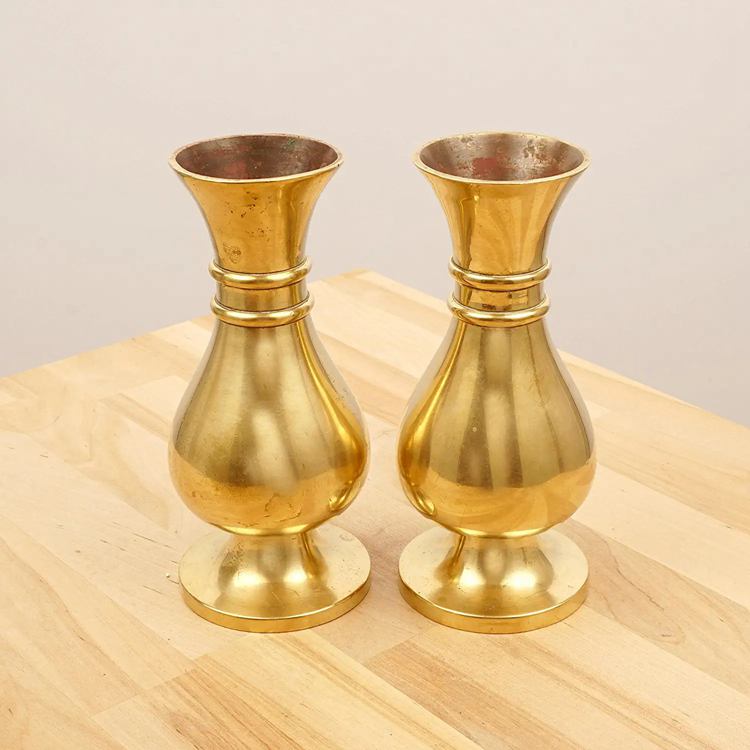
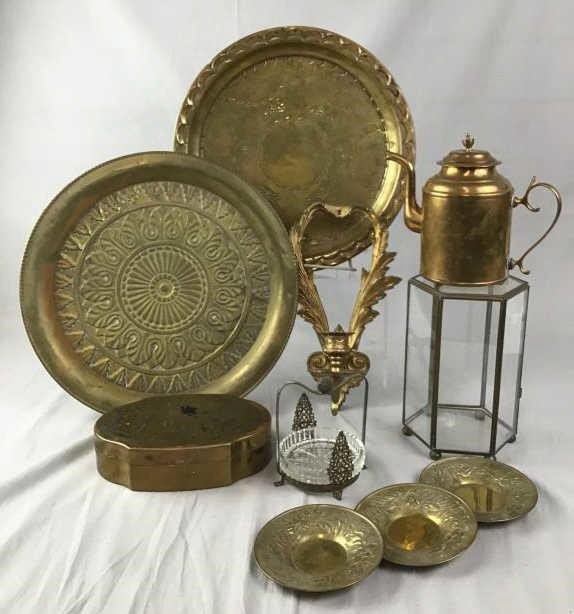
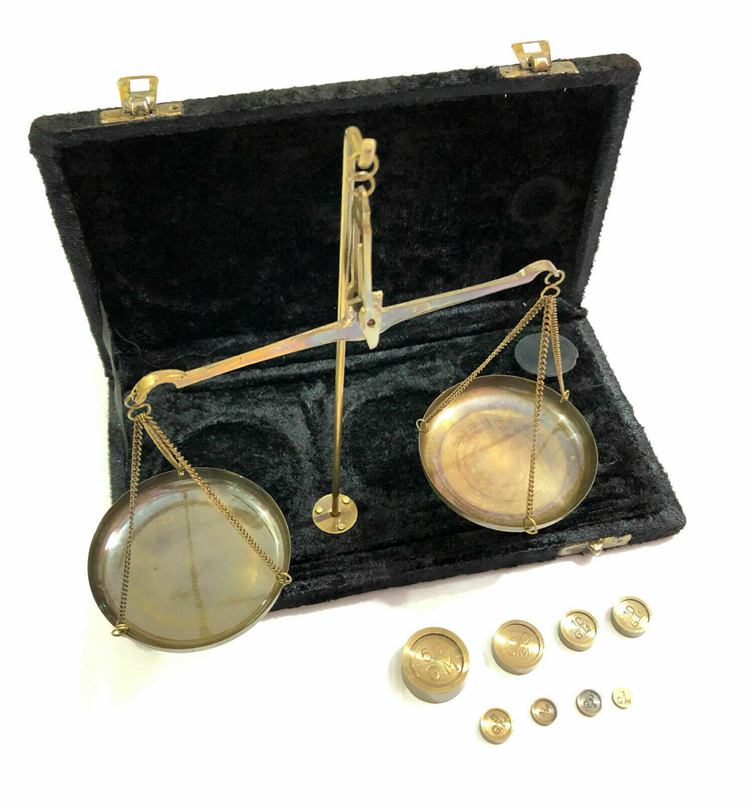
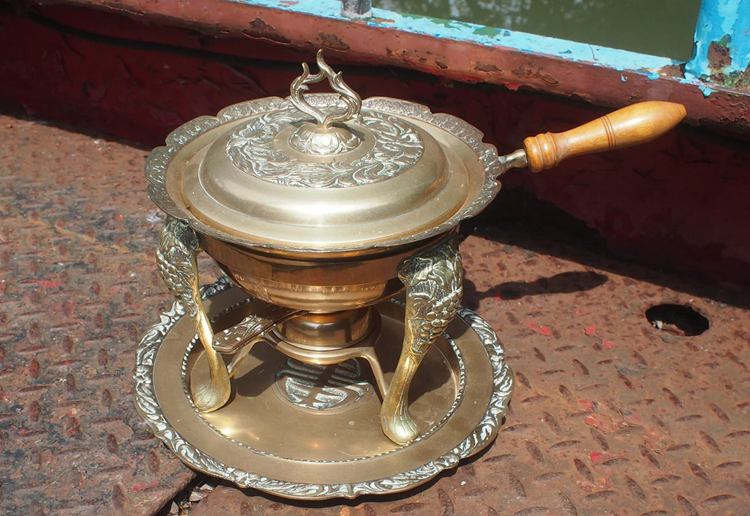
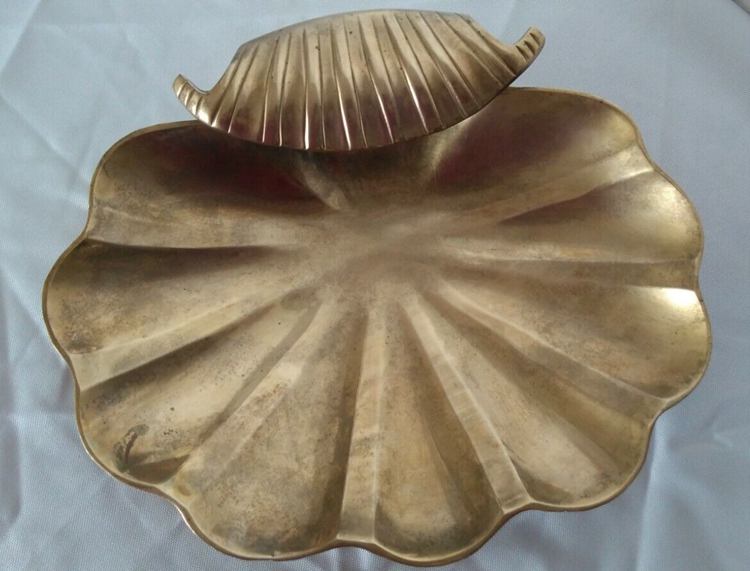
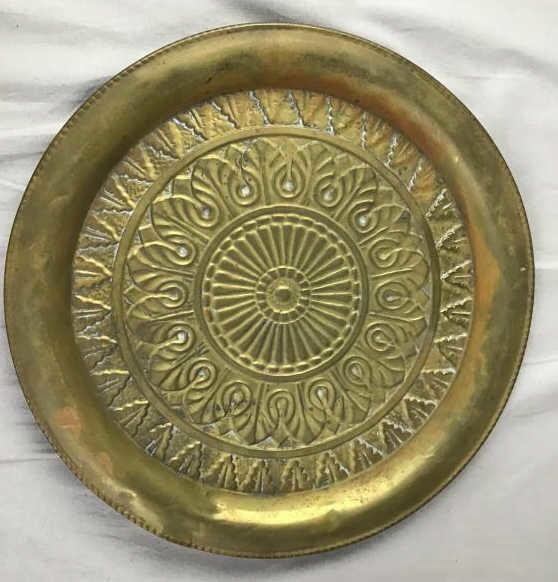




![Where To Sell Antique Furniture In 2022 [Ultimate Guide]](https://www.jacquelinestallone.com/wp-content/uploads/2022/09/Etsy-Your-Place-To-Buy-And-Sell-All-Things-Handmade-600x450.jpg)


